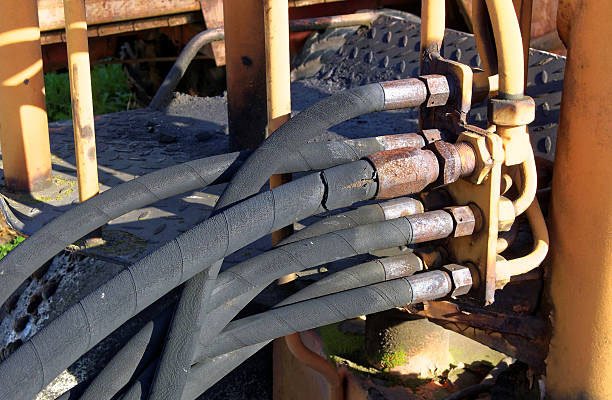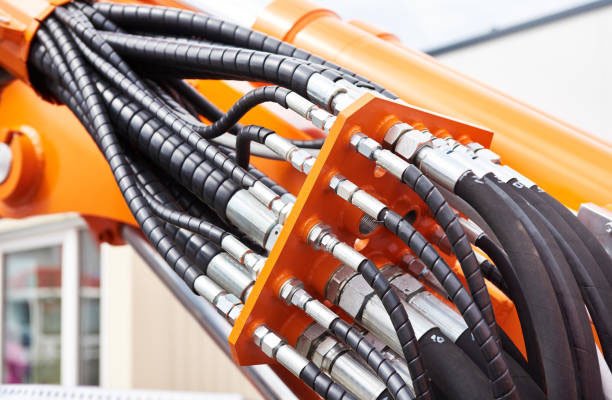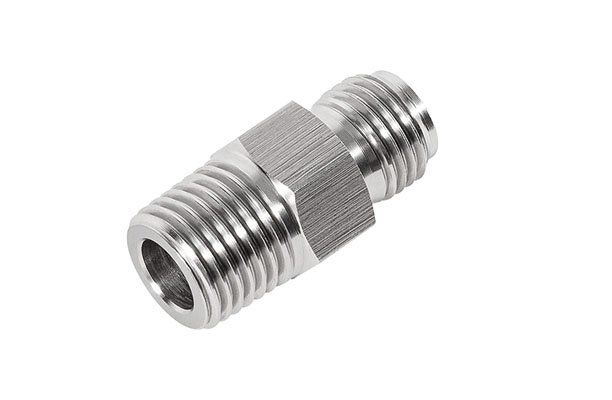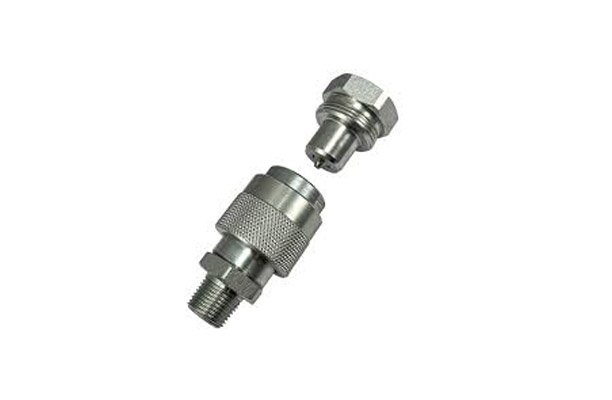Understanding Hydraulic Hose Failure
Hydraulic hose failure can bring operations to a sudden halt, risking safety, causing costly downtime, and leading to equipment damage. While it might seem like a sudden event, most hose failures result from avoidable issues — like abrasion, poor routing, heat, or incorrect installation. Understanding the causes and taking proactive steps can significantly extend hose life and keep your systems running reliably.
What “failure” really means
- A complete rupture or burst, where the hose can no longer contain pressure
- A leak or weep through cracks, pinholes, or damaged reinforcement
- A fitting blow‑off, where the barrier between hose and connector fails
- Internal delamination or erosion, where layers separate or wear internally before external signs appear
- Loss of system performance (slow actuation, reduced pressure, erratic behavior)
Because it’s under high pressure, even a seemingly small failure can escalate quickly.
Why hoses fail is a mix of physics, materials, environment, and human factors. Over time, stresses that seem minor accumulate until the hose can’t cope. The goal is to intercept before that “big failure” moment.
Deep Dive: The Root Causes of Hydraulic Hose Failur
Let’s explore the key failure modes and what triggers them. Each mode is a lens into how things go wrong.
Abrasion & External Wear
A very common culprit. When a hose rubs against a surface—metal edges, structural frames, other hoses—the outer cover wears down. Once you expose the reinforcement (wire braid, fibers), you’ve lost a major layer of protection.
Even subtle vibration over time causes micro‐abrasion. And sometimes, cover materials degrade under chemical or UV attack, making them easier to wear.
Improper Routing, Bend Radius & Multi‑Plane Bending
Every hydraulic hose has a minimum bend radius — bending more sharply than that stresses its reinforcement layers. That stress leads to fatigue, shifting wires, cracks, or internal damage.
Even worse is multi‑plane bending (twisting while bending), which can drastically reduce service life. At as little as a few degrees of twist, life expectancy can drop significantly.
Also, when the hose is routed tight near a fitting, the deformation concentrates stress at the crimp or transition zone, which is often where failures begin.
Heat & Thermal Degradation
Heat is insidious. Over time, the elastomer materials (rubber, synthetic polymers) degrade — plasticizers evaporate, rubber becomes brittle, microcracks form, and flexibility is lost.
Signs of heat damage include hoses that don’t relax after being de‑pressurized (they retain a bend), cracking or flaking covers, or hose walls that sound crisp when flexed.
If hoses are run too close to engine parts, exhausts, or heat sources without shielding, this accelerates failure dramatically.
Fluid Incompatibility & Internal Erosion
The fluid inside isn’t neutral. If it’s chemically incompatible with the hose’s inner lining, the lining can degrade — swell, soften, delaminate, or crack.
High-velocity flow, especially with suspended particles or contaminants, can erode the inner tube over time. That creates thinning, weakness, and eventual leakage or rupture.
Fitting & Assembly Errors
Many hose failures begin at the ends:
- If the hose is not inserted far enough into the fitting shell, the gripping surfaces may not make full contact, weakening the joint.
- Crimping that’s too loose leads to slippage; too tight damages the hose or causes internal cuts.
- Misalignment or twisting during crimp or installation can introduce weak zones or internal microdamage.
- Leaks between the fitting shell and hose can stem from crimp errors or misassembly.
Pressure Surges & Overpressure
Every hose has a rating: working pressure and burst rating. But in real systems, pressure spikes occur — water hammer, abrupt valve closures, surges from pumps. These transient pressures can exceed the hose’s limit, causing sudden ruptures.
Repeated cycling near the limits also fatigues the reinforcement, gradually weakening it until one spike pushes it over the edge.
Mechanical / Site Damage & Environmental Effects
The environment can be brutal:
- Tools, debris, machinery movement can nick or cut a hose.
- UV, ozone, chemicals, and salty air degrade covers or reinforcement over time.
- Vibration, impacts, or crushing loads can distort or damage hoses.
A well‑placed small scratch today may become a full rupture tomorrow.
Consequences of Hydraulic Hose Failure: Safety, Costs & System Impact
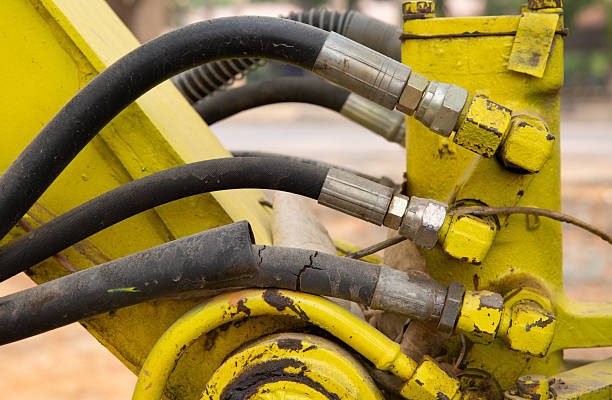
Failures don’t just stop fluid. They ripple through systems, personnel safety, and operations.
Safety Risks & Injuries
Perhaps the most immediate risk. High-pressure hydraulic fluid is dangerous:
- Injection injuries: Even tiny leaks under high pressure can penetrate skin, injecting fluid into tissue. This is very serious and requires immediate medical attention.
- Whipping hoses: A hose whose end detaches violently can lash like a whip, causing injury or damage.
- Burns/fire hazards: Fluid is often hot, and if sprayed onto hot surfaces or near ignition sources, it can ignite.
- Unexpected movement / load drop: In lifting or load-bearing systems, failure can cause sudden collapse or uncontrolled movement.
- Collateral harm: Hydraulic fluid may come into contact with eyes, skin, or equipment not designed to handle it.
Operational & Repair Costs
- Downtime: A failed hose often halts the machine until repair or replacement. That can cascade into missed deadlines, idle workers, or overtime costs.
- Repair costs: Beyond hose replacement, fluid flushes, new fittings, and collateral damage to adjacent parts may be required.
- Contamination: Failed hoses can allow debris or fluid to enter the system, damaging pumps, valves, and other components.
- Inventory & logistics: Emergency part ordering, rush shipping, or keeping spare hoses stocked ties up capital.
Environmental & Regulatory Consequences
- Fluid spills: Hydraulic fluid is often oil-based or otherwise hazardous. Leaks can contaminate soil and groundwater, requiring cleanup.
- Regulatory penalties: Environmental or workplace safety agencies may impose fines or require remediation.
- Reputation risk: Repeated leaks give the impression of poor maintenance standards, potentially affecting customer or stakeholder confidence.
Long-Term System Impacts
- Degraded performance: Even minor leaks or internal delamination can cause pressure loss, slower actuation, or erratic motion.
- Accelerated wear on other components: Pumps, seals, valves exposed to debris or improper fluid conditions suffer.
- Shortened lifespan: Repeated stress cycles beyond safe limits accelerate fatigue, making the whole hydraulic network less reliable.
Prevention & Best Practices: Designing Durability into Your System
Prevention is the most powerful tool you have. Many failures can be avoided entirely with the right design and installation practices. Here are strategies to build in reliability from day one.
Thoughtful Hose & Fitting Selection
- Choose hoses with pressure ratings comfortably above your system’s working pressure (with a safety margin)
- Match hoses to the temperature range and fluid compatibility of your system
- Opt for robust reinforcement types (e.g. multi-wire, spiral) in high‑stress or surge environments
- Use abrasion‑resistant covers where hoses may rub against metal or other surfaces
- Select fittings and adapters that are designed for your hose type—stick to matched systems when possible to reduce unknown failure modes
Correct Assembly & Installation
- Clean everything: Contaminants trapped in a hose or fitting cause internal wear. According to hydraulics guide, flushing or blowing air through the hose after assembly helps remove debris.
- Avoid twisting: Always orient, align, and use laylines to prevent torsion in the hose when pressurized.
- Respect minimum bend radius: Never force a hose in a bend tighter than its rated bend radius, especially near fittings where stress is magnified.
- Proper slack & support: Leave enough slack for movement and vibration. Use clamps, guides, or clamps to prevent hoses sagging or contacting surfaces.
- Heat shielding & spacing: Maintain sufficient distance from hot surfaces (exhausts, engines), or install shields and wraps to protect the hose cover from thermal degradation.
- Torque & tightening: When connecting, hold the fitting’s backing hex and torque per spec to avoid twisting or over‑stress.
Protective & Supporting Measures
- Abrasion guards, sleeves, spiral wraps: Use these over vulnerable segments to defend against frictional wear
- Bundling & routing controls: Bundle hoses that move similarly so they don’t rub against each other; avoid crossing high‑stress zones
- Guarding & shields: Physical covers or shields for areas exposed to impact, debris, or lateral hazards
- Use of accumulators or snubbers: To absorb shock or pressure spikes so the hose isn’t the sacrificial component
By combining robust component selection with careful installation and protective measures, you reduce the chances that small flaws or stresses will compound into a catastrophic failure.
Inspection, Maintenance & Monitoring: Catch Issues Before They Break
Even the best system needs regular checkups. Early detection is key to preventing failure.
Scheduled Inspection Cadence
- For stationary equipment, inspect hoses at least every 3 months.
- For mobile equipment, examine hoses every 400 to 600 hours of operation (or quarterly) depending on conditions.
- Also perform semiannual or annual in-depth inspections by certified technicians to catch degradation modes that cursory checks might miss.
Visual, Physical & Leak Detection Checks
- Visual scan: Look for abrasion, cuts, fraying, exposed wires, bulges, blisters, cracks
- Flexibility testing: Gently bend the hose (within safe limits) to detect stiffness, cracking, or soft spots
- Check fittings & crimps: Look for deformation, loosening, leaks or weeping fluid
- Leak detection techniques:
• Clean first — dirt can mask leaks
• Use UV dye kits in compatible fluids to trace small leaks under black light
• Use leak detection sprays or non‑invasive testing tools
• Pressurize gradually and monitor suspect joints and lengths carefully - Pressure and performance checks: Monitor for uncharacteristic drops in pressure, erratic motion, or slower response times
- Record keeping: Log inspection results, replacement history, operating hours, environmental stressors — trends often reveal underlying problems before failure
Replacement Criteria & Lifetime Management
- Age vs use: Even if a hose looks fine, if it’s beyond its expected service life (often 5–7 years, depending on conditions), consider replacing it proactively.
- Severe damage: Bulges, cracks, exposed reinforcement, or internal delamination are grounds for immediate replacement
- Repeated leaks: Hoses or fittings that leak repeatedly even after repair should be replaced entirely
- High‑stress zones: If parts of your system see extreme pressure fluctuations, temperature cycles, or heavy movement, you may shorten the replacement interval in those zones
Routine maintenance is not about reacting — it’s about staying ahead.
Advanced Strategies & Predictive Technologies
To push reliability further, many modern systems adopt smarter techniques and condition monitoring to anticipate failure.
Predictive & Condition‑Based Maintenance (CBM)
- Rather than fixed schedules, use sensor data (pressure, temperature, vibration, flow) to flag anomalies or trends before failure.
- Sensor analytics and machine learning models can forecast where the weakest link might fail, letting you plan replacement, not emergency repair.
- Be cautious: predictive maintenance is only as strong as the data and models — it should complement, not replace, hands‑on inspections.
Real-Time Monitoring & Digital Analytics
- Use IoT systems to monitor hose segment pressures, temperatures, or electrical conductivity in real time.
- Alert thresholds: set alarms when values deviate from expected ranges (e.g. sudden pressure spike, temperature creep, abnormal vibration)
- Visual dashboards and trend graphs help maintenance teams see changes over weeks or months, highlighting slow failures rather than only catastrophic events
Contamination Control & Fluid Quality Monitoring
- Sophisticated filtration systems (multi‑stage, bypass filters, microfilters) help suppress particulate wear inside hoses.
- Regular fluid analysis: testing for particle count, moisture, acidity, and wear metals. Degraded fluid often correlates with hose problems.
- Use “kidney loop” or stand‑alone filtration circuits to maintain fluid cleanliness between major changes.
Smart Materials & Hose Technology
- Some advanced hoses are built with conductive layers to drain static and allow monitoring of electrical properties as a health indicator.
- Newer composite covers, embedded fiber optics, or built‑in sensors are emerging to provide health feedback and early warning
- Smart fitting designs: fittings that show seal wear or micro‑leakage by color change or integrated sensors
Conclusion
Hydraulic hose failure isn’t a mystery — it’s the result of known stresses, material limits, environmental factors, and human decisions. The good news: most failures are preventable.
By combining:
- Thoughtful design and material choice
- Disciplined installation and assembly practices
- Protective measures (sleeves, guards, heat shields)
- Rigorous inspection, maintenance, and monitoring
- Advanced or smart strategies
you can shift your system from “waiting for the next breakdown” to a proactive, reliable system that minimizes risk and maximizes uptime.
FAQs
Q1: What are the early signs of hose failure?
Small leaks, cracks, bulges, abrasions, hardened sections, or hose stiffness are key red flags. Also watch for slower system response or pressure drops.
Q2: When should I replace a hose even if it looks okay?
Replace hoses that are beyond service life, in high-stress areas, or have been repaired multiple times — even if they appear fine externally.
Q3: Can a hose fail without visible leaks?
Yes. Internal erosion or delamination can reduce performance without external signs. Watch for erratic pressure or motion.
Q4: What causes a fitting to blow off?
Poor crimping, incorrect insertion, twisting, or mismatched parts can cause the fitting to detach under pressure.
Q5: How does heat affect hose life?
Excess heat makes hoses brittle and prone to cracks. Use heat shields and choose hoses rated for your system’s temperature.
Q6: Can a hydraulic fuse prevent failures?
It helps limit damage after a failure by stopping fluid loss, but it doesn’t prevent the hose from failing in the first place.

